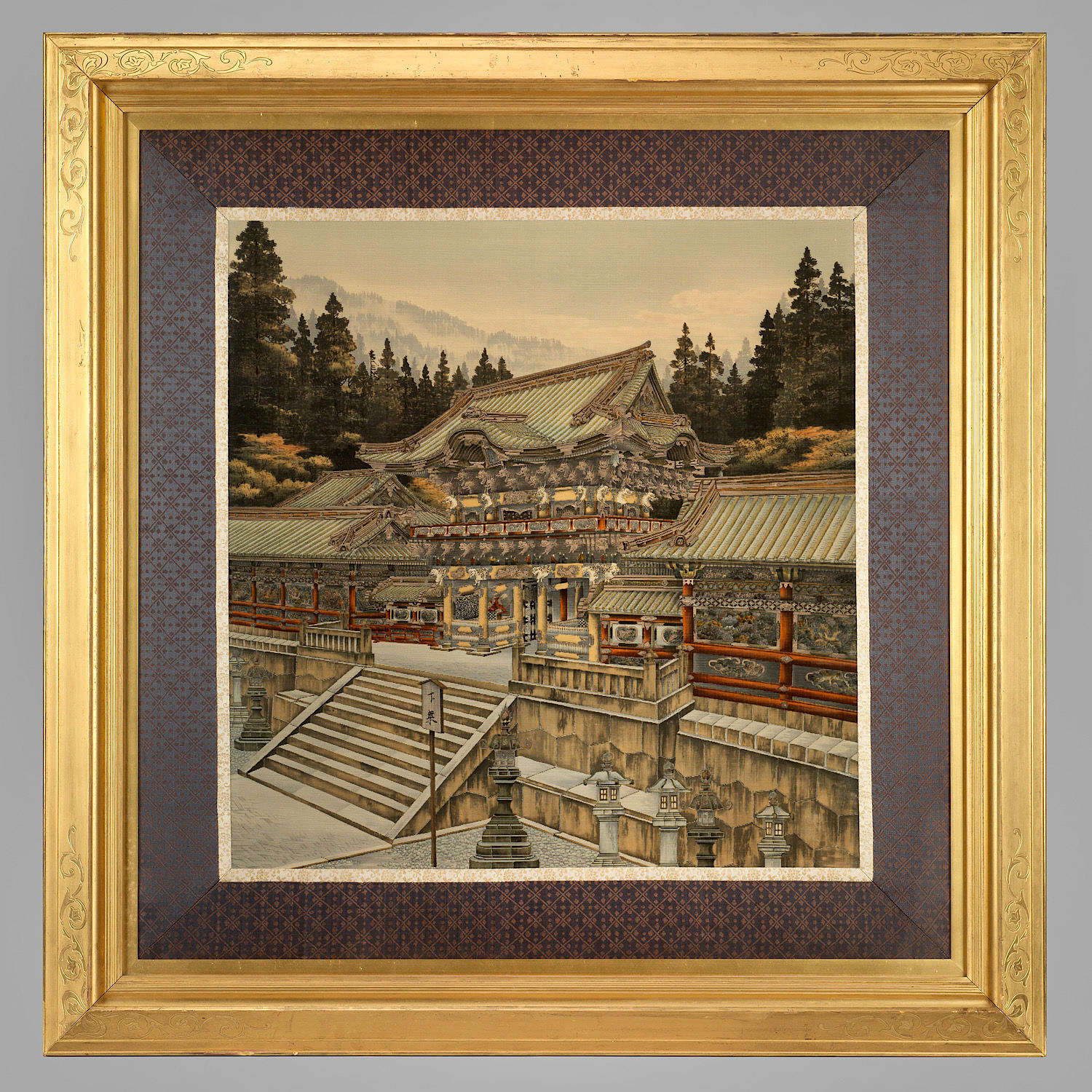




Code: 10189
Dimensions:
Japanese Yūzen-Birodo cut velvet 天鵝絨 of the Tōshō-gū Shinto shrine set in a pine tree forest with original gilt wood frame bearing the label of 'J.B. Bennett & Son, 50 Gordon Street- Glasgow Painters and Decorators by special appointment to HM Queen Victoria’ with a silk pattern design mount, Meiji period 1868-1912.
The Tōshōgū Shrine 東照宮 is located in Nikkō, Tochigi Prefecture and is a UNESCO World Heritage Site.
In 1868 the leading textile firm Nishimura Sozaemon-Kyoto 西村総左衛門 invented this technique. The velvet was woven by passing the threads over fine metal wires parallel to the woof and then cut to form the pile. The precise cutting would achieve a chiaroscuro three-dimensional effect.The first example of Yūzen-Birodo was exhibited at the Second National Industrial Exhibition in Tokyo in 1881.
Reference: 'Threads of silk and gold, Ornamental Textiles from Meiji Japan', by H.T. McDermott and C. Pollard, The Oxford Ashmolean Museum Catalogue Exhibition, 2012, pp. 160-169.
For a similar example see : 'Splendors of Meiji, Treasures of Imperial Japan' by Joe Earle, the Kibo Foundation 2002, no. 280 pg. 393.
All our pieces come with a BADA Certificate of Provenance (The British Antiques Dealer's Association) and are inclusive of free worldwide shipping & insurance.